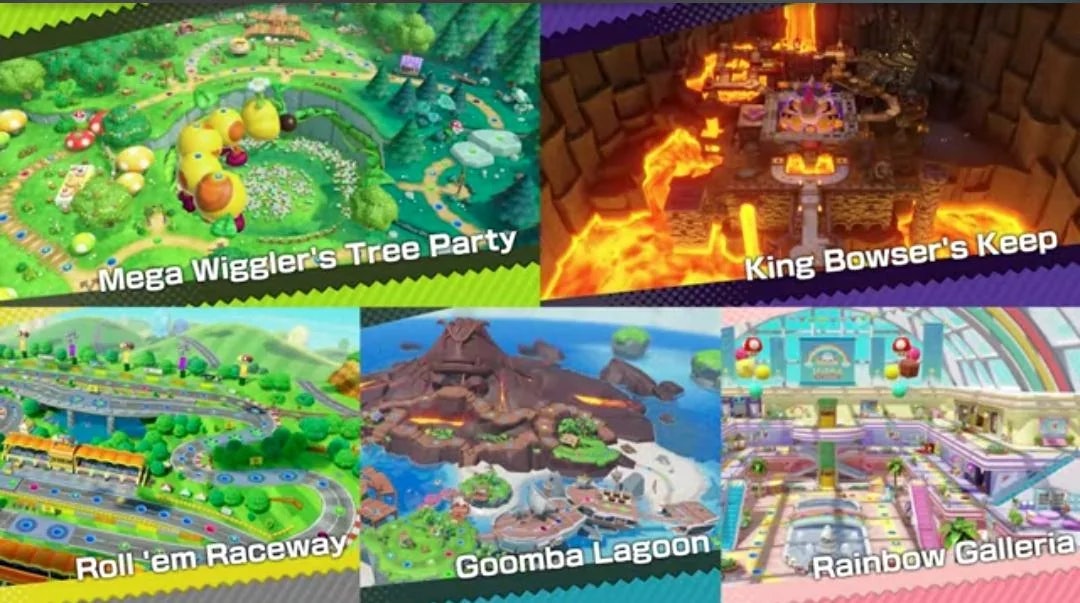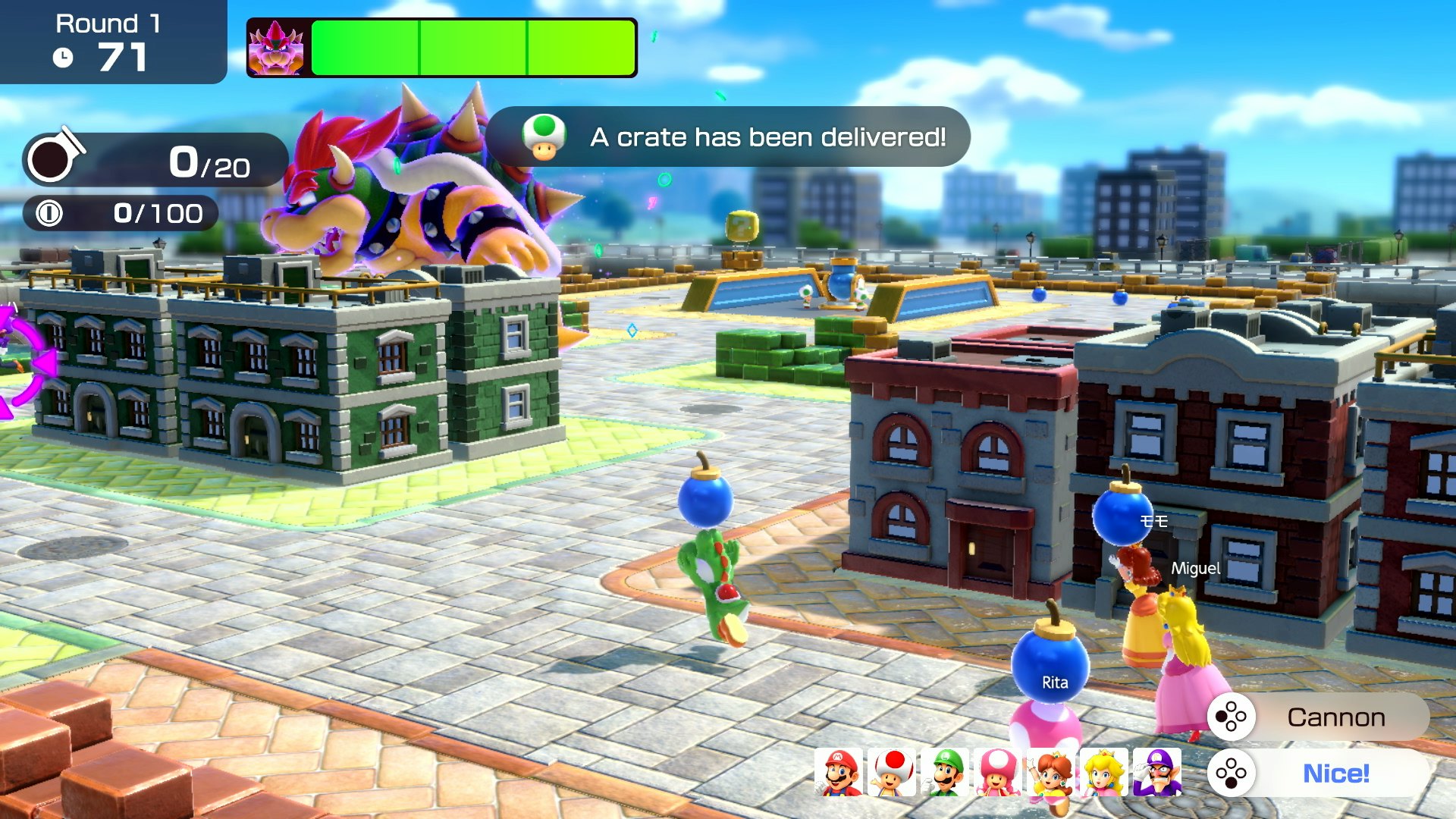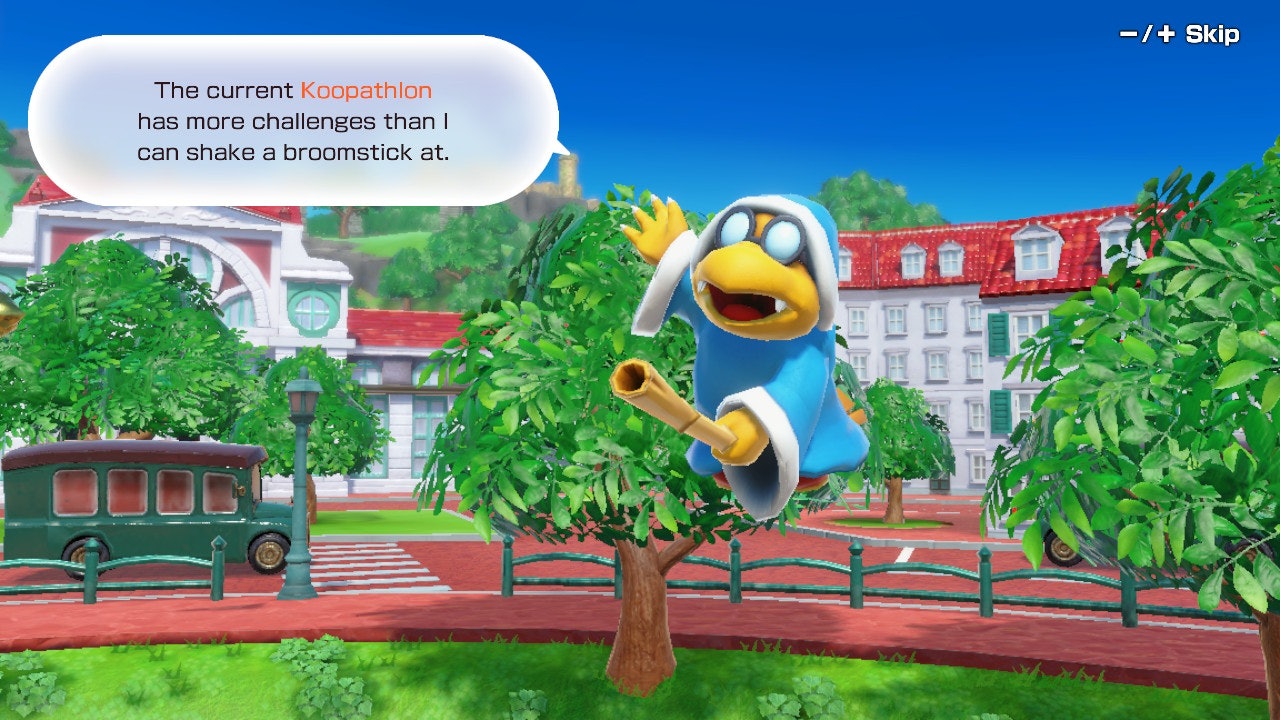
At the end of our fifth game of Super Mario Party Jamboree, my partner and I sat there, hands tightly gripping our Joy-Cons waiting for the results. By now, we’d grown accustomed to the seemingly random ways the game decides to dole out bonus Stars to players who underperformed. Toad provided a single star to the CPU-controlled Rosalina for landing on the most event spaces in the matchup. Luigi, whom I was playing as, and Princess Daisy, controlled by my partner, got nothing. It was down to the both of us, and the tension was palpable.
Finally, the adorable Toad announced its decision: Daisy got the W, eking out a victory by having more coins than Luigi. As much as it hurt to resign to the clutches of defeat after 90 minutes of emotional highs and hilarious lows, it didn’t sway me from wanting to load up another one of Jamboree’s colorful, nuanced boards for another go.
That feeling of unbridled multiplayer joy despite the total bollocks that can keep you from claiming victory is a distillation of what Jamboree is all about. Every board and its unique mechanics make for nail-biting scenarios for photo finishes, betrayals, and unexpected moments. Jamboree’s minigames are mostly fun, even if they are spread thin among its many modes. And while some of the genuinely inventive swings at adding to the Mario Party package fall short of being as complete and endlessly replayable as the traditional experience, they still make for a fun distraction for when players want to mix things up.
Rocking the Place

Jamboree is a whole lot of Game. There are 112 minigames, seven boards, three new modes, and three sections where players can engage with minigames centered on particular mechanics. The content on offer here feels more plentiful than any other Mario Party game to date. If you’re someone who doesn’t pick up party games because of the limited nature of what's on offer, I think Jamboree does a great job justifying its $60 price tag thanks to just how much variety it offers.
The star of the show remains the main Mario Party mode, a board game where players must collect more stars than others within a certain number of turns. But that has less to do with the core mechanics refined over the last 26 years and more to do with the quality of the boards you’re playing on.
Each of the game’s seven boards has level-specific twists and factors to consider, adding a level of strategy and variance that I appreciated. Rainbow Galleria is a three-floor shopping mall with escalators, elevators, and unique merchants, plus periodic flash sales that slash the prices of game-altering items. Western Land features a moving train and gated-off sections of the board that can only be unlocked with keys bought from shops. The introductory level has a simplistic layout with a slumbering Mega Wiggler that can move its position, creating shortcuts or setbacks for players seeking out the next power item or star.
The spectacular collection of levels showcases that the Mario Party formula is at its best when there are plenty of opportunities for strategy and stipulations that make the moment-to-moment dice rolls a more thoughtful and interesting exercise.
Minigames for All
As for Jamboree’s minigames, I found the selection fun enough to hold their own against the series’ legacy. There are some duds in the bunch. I groaned anytime the CPU selected Sandwiched, a platforming challenge where players jump onto falling stacks of sandwiches. Trample-line, a free-for-all where bouncing players must avoid a spike to prevent getting eliminated, was a little too chaotic for me. But the vast majority of the games are fun to play.
I was particularly enamored with more tactical games. Hot Cross Blocks has players crossing a lava-filled chasm by slowly building a bridge using one of four differently shaped platforms. However, when more than a single player picks the same pattern during a round, no one wins. It’s a game of logic that never gets old. And thankfully, Jamboree has a few others like this among the otherwise simplistic but fun enough games.
Perhaps the only downside to the minigames is how quickly it feels like you’ve seen everything. While the game boasts dozens of minigames, many are exclusive to other modes. By my sixth or seventh match, I had seen my fair share of repeats. While this wasn’t a deal-breaker in the two weeks I spent playing it, I can see this hurting the experience for others, especially if they don’t stray from the game’s main mode.
The Spice of Life

The most noteworthy of the newest game modes are Kooplathon and Bowser Bomb Squad, but neither is as fleshed out as it could be. Kooplathon is a 20-player footrace. Placement is determined by how many coins they can collect in minigames. The mode has a decent selection of minigames like Wack-a-Mole and some tough platforming challenges. But you can be eliminated in the final round of competition regardless of how you perform in the first few rounds, making it less fun overall.
Bowser Bomb Squad is a much better offering. Eight players must collect bombs littered around a map and then bring them to cannons as a giant Bowser 10 times their size tries to stop them. If players can bring back enough bombs, they can fire the cannon, knocking off a chunk of Bowser’s health and triggering a minigame.
It’s essentially a more action-oriented Mario Party than the traditional turn-based soiree. The controls can feel a bit cumbersome, as camera control is tied to the shoulder buttons. But the main idea here is the strongest of the new modes. What holds both of these modes back is the lack of a split-screen. It’s a sorely missed opportunity that two to four friends can’t play online alongside you. And with that core feature missing, I still think the traditional Mario Party is where this game shines best.
Everybody Talks

One of the only glaring issues with Jamboree is how much it talks. While I can understand Nintendo wanting to make it as easy as possible for new players, it can be outrageous how much the game wants to stop and explain. Tutorials are mandatory, constant, and heavy-handed, especially when you first jump into the game.
This is less of an issue in traditional Mario Party modes. But in modes like Rhythm Kitchen and Kooplathon, things can be painfully slow when unskippable pauses and dialogue are interjecting after every minigame. Both online modes must be played in practice before you’re allowed online.
While this might not be a deal-breaker for some, I found it frustrating to play at such a snail’s pace. I hope that my save is never deleted, as a second handful of hours sitting through tutorials might be too much to bear. Patching in a “skip tutorials” mode for those rare occasions would be a godsend.
Party All the Time

Super Mario Party Jamboree, like any other great Mario Party, isn’t some big departure from what was first established in 1998. There are some good times to be had in the new modes, but they serve more as a fun distraction from what these games do well. For a package as jam-packed with fun ideas and content, Jamboree is easily one of the most entertaining multiplayer games you can own on the Switch today.
8/10
Super Mario Party Jamboree launches Oct. 17 for Nintendo Switch.
INVERSE VIDEO GAME REVIEW ETHOS: Every Inverse video game review answers two questions: Is this game worth your time? Are you getting what you pay for? We have no tolerance for endless fetch quests, clunky mechanics, or bugs that dilute the experience. We care deeply about a game’s design, world-building, character arcs, and storytelling come together. Inverse will never punch down, but we aren’t afraid to punch up. We love magic and science-fiction in equal measure, and as much as we love experiencing rich stories and worlds through games, we won’t ignore the real-world context in which those games are made.







